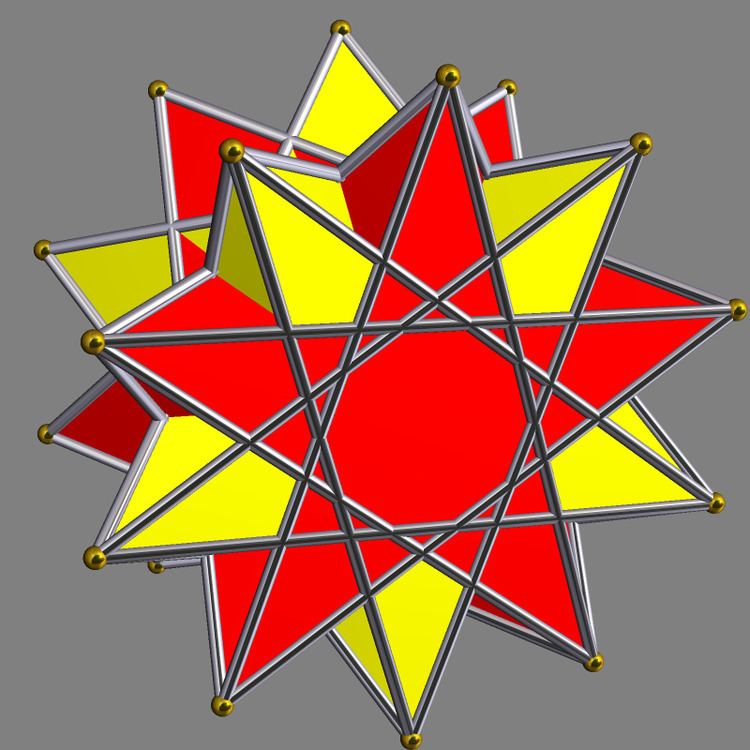 | ||
In geometry], a prismatic compound of antiprism is a category of uniform polyhedron compound. Each member of this infinite family of uniform polyhedron compounds is a symmetric arrangement of antiprisms sharing a common axis of rotational symmetry.
Contents
Infinite family
This infinite family can be enumerated as follows:
Where p/q=2, the component is the tetrahedron (or dyadic antiprism). In this case, if n=2 then the compound is the stella octangula, with higher symmetry (Oh).
Compounds of two antiprisms
Compounds of two n-antiprisms share their vertices with a 2n-prism, and exist as two alternated set of vertices.
Cartesian coordinates for the vertices of a antiprism with n-gonal bases and isosceles triangles are
with k ranging from 0 to 2n−1; if the triangles are equilateral,
Compound of two trapezohedra (duals)
The duals of the prismatic compound of antiprisms are compounds of trapezohedra:
Compound of three antiprisms
For compounds of three digonal antiprisms, they are rotated 60 degrees, while three triangular antiprisms are rotated 40 degrees.
